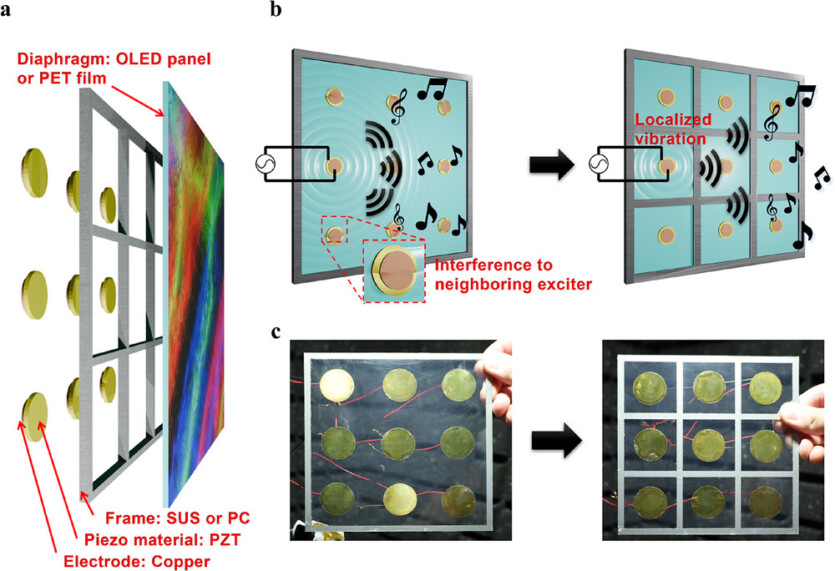
Scientists from South Korea have developed an innovative Pixel-Based Local Sound OLED technology that allows each individual pixel in an OLED panel to produce sound.
The technology has been successfully tested on 13-inch OLED panel, similar to those used in tablets and laptops. The research was led by Suh Seok Choi from the Department of Electrical Engineering at Pohang University of Science and Technology (POSTECH) and Ph Inpe Hong.
Visual display technologies have advanced significantly in recent years. However, manufacturers are now striving to achieve not only improved resolution, wide dynamic range, and accurate color reproduction. It’s not about realism, but about immersing users in high-quality content.
In this direction, we are working on creating multitouch panels, that will directly reproduce not only images, but also sound and touch. Studies show that audiovisual synchronization accounts for almost 90% of the immersive effect.
The majority modern panels still use external speakers or sound systems. Their size can cause problems when placing them, especially in small spaces. The key problem is that the devices that reproduce sound remain quite bulky,which makes it difficult to deploy multiple devices without interfering with or disrupting the thin OLED design. In addition, crosstalk between multiple speakers makes it difficult to establish precise control over localized sound.
Scientists from the POSTECH proposed a solution to the problem by integrating ultra-thin piezoelectric exciters into the OLED panel frame. These exciters are placed together with the pixels, converting electrical signals into sound vibrations. Thus each pixel can act as an independent sound source.
The researchers also developed a method to completely eliminate audio crosstalk, ensuring that multiple sounds from different areas of the display do not interfere with each other. The display delivers high-quality sound directly from the screen, without the need for external speakers, while maintaining the benefits of a thin and light OLED.
New flexible OLED display for smartphones plays music and transforms freely
The results of the study were published in the journal Advanced Science
Source: TechXplore

Spelling error report
The following text will be sent to our editors: